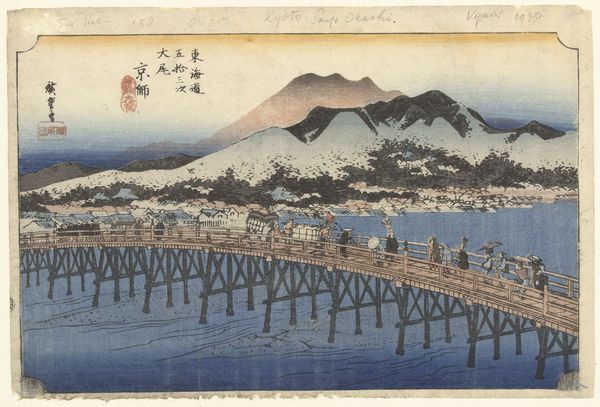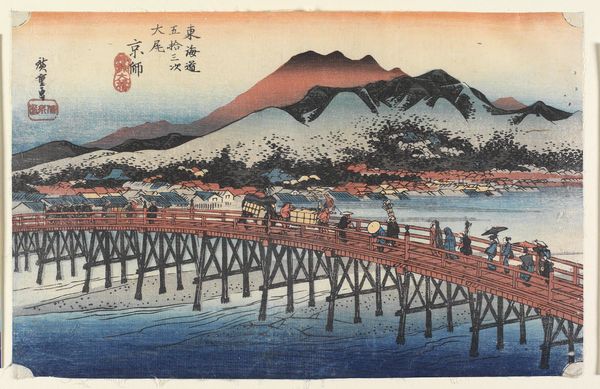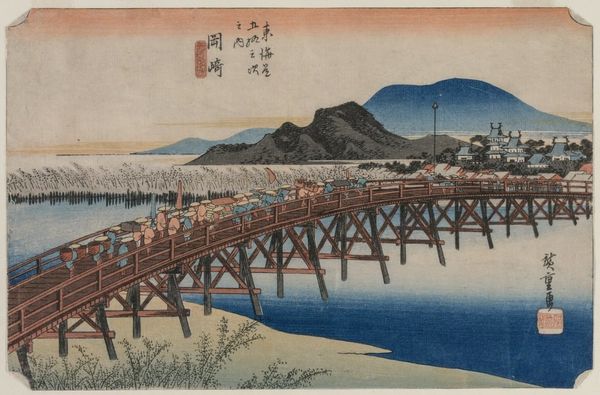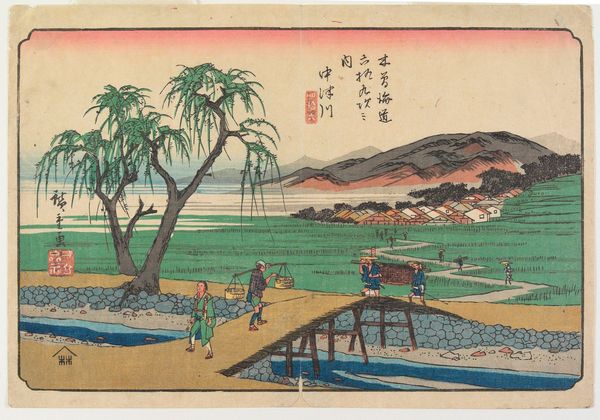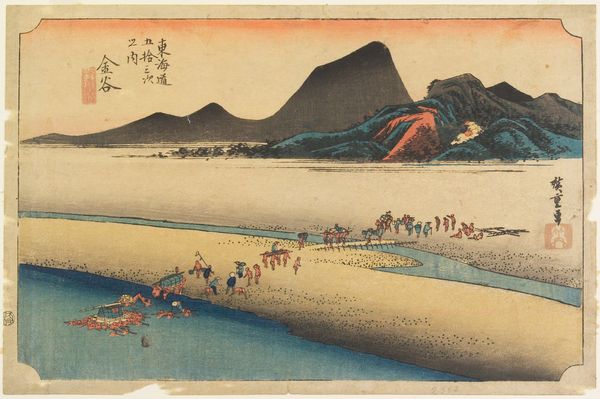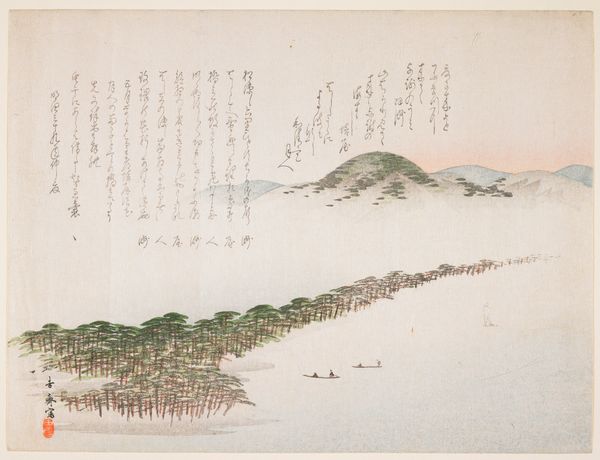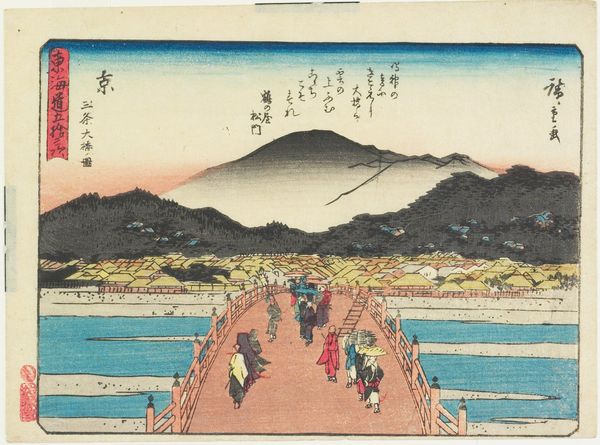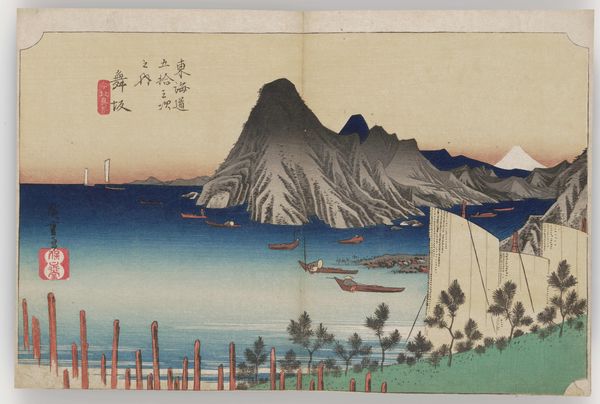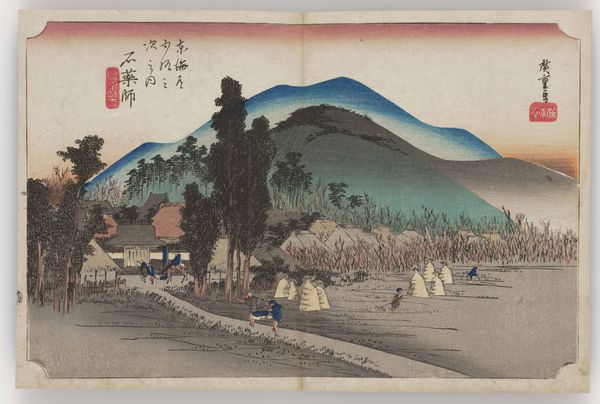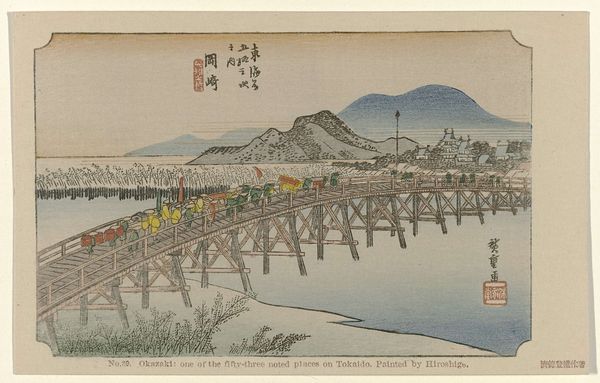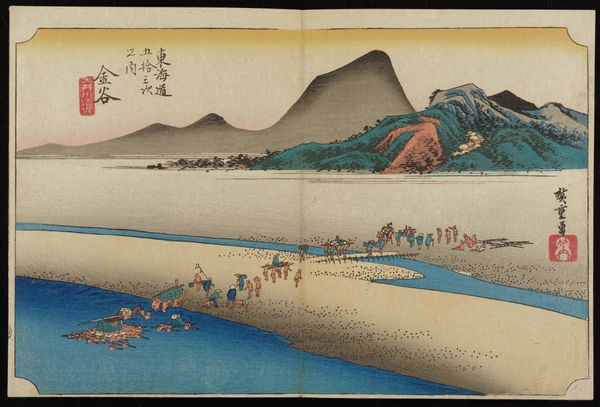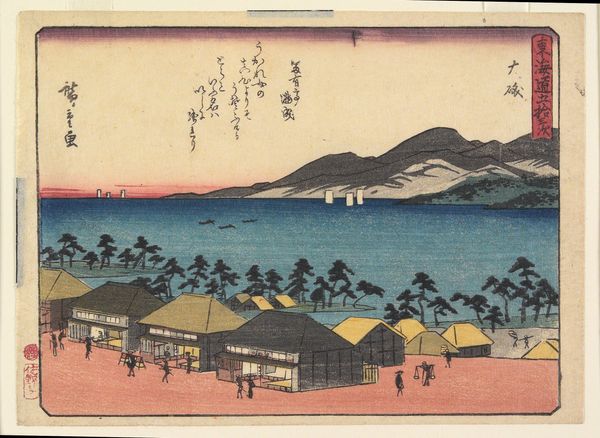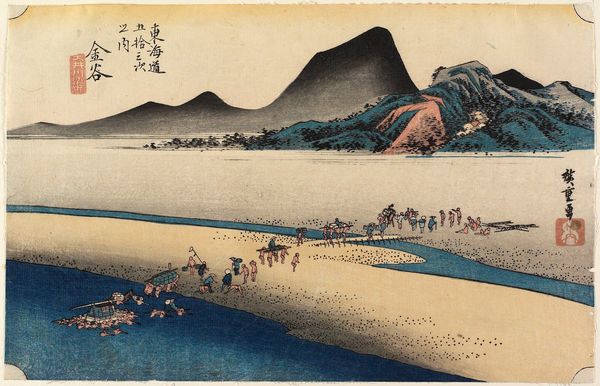
print, watercolor, ink, color-on-paper, woodblock-print
#
water colours
#
ink painting
# print
#
asian-art
#
landscape
#
ukiyo-e
#
watercolor
#
ink
#
color-on-paper
#
coloured pencil
#
woodblock-print
#
naive art
#
orientalism
Dimensions: 9 1/2 × 14 1/4 in. (24.13 × 36.2 cm) (sheet, horizontal ōban)
Copyright: Public Domain
Editor: We're looking at "Keishi—Great Sanjo Bridge," a color woodblock print by Utagawa Hiroshige, made around 1832 or 1833. It has a wonderful sense of bustling life on a serene landscape. What's your interpretation of this scene? Curator: This print provides a window into the Edo period and the representation of lived experience, particularly for those navigating the Tokaido Road. This series often romanticizes travel, but beneath the surface, consider the socioeconomic dynamics at play. Who had access to leisure travel? How did this impact class and gender hierarchies within Japan at this time? Editor: That's an interesting way to think about it. I was just enjoying the pretty colours. I hadn't considered it as potentially speaking to class divisions. Curator: It is important to look past the purely aesthetic. Even the technique itself – the woodblock print, widely available – challenges traditional notions of fine art. In its accessibility, was it perhaps a tool for democratizing art, or did it inadvertently reinforce existing social structures by catering to popular taste? Editor: So you're saying we should question whether it challenged or perpetuated the status quo? Curator: Exactly. Consider also, how does the presentation of the landscape influence our understanding of humanity’s relationship to nature during this era? Is it a celebration or something more complicated? Editor: I guess I see how looking at art through this lens can change our perspective. There’s more to unpack than I initially thought! Curator: Absolutely, art serves as both a reflection and a constructor of social and political realities.
Comments
No comments
Be the first to comment and join the conversation on the ultimate creative platform.
